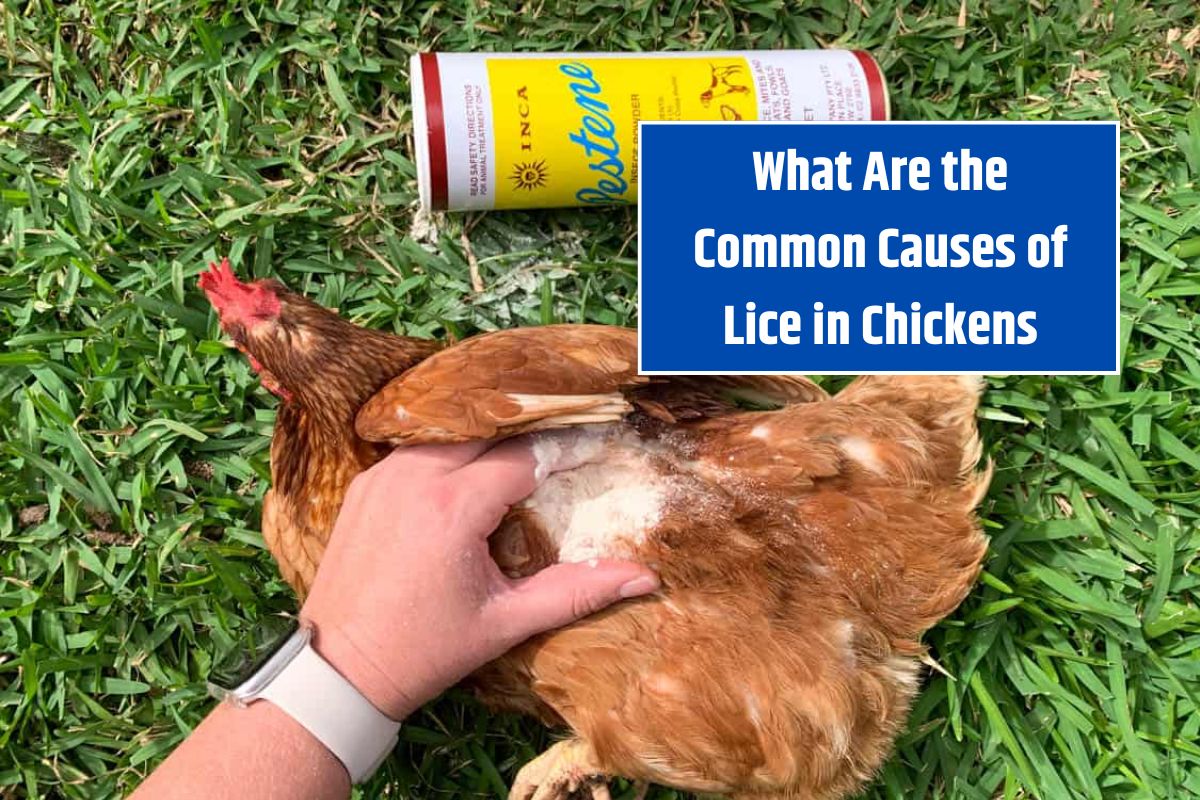Chicken lice infestations are a common issue among backyard flocks, but they can be controlled with proper care and monitoring. These external parasites can spread rapidly and lead to serious health issues, including anemia and reduced egg production. Learn how to identify, treat, and prevent chicken lice effectively to keep your flock healthy and happy.
What Are Chicken Lice?
Chicken lice are external parasites that live on chickens, feeding on dead skin, feather debris, and sometimes blood. Unlike human lice, poultry lice do not infest humans—they are specific to birds. Lice thrive in warm environments, often hiding under feathers near the vent area, and they spread easily through close contact within the flock or exposure to wild birds.
Symptoms of Lice Infestation in Chickens
- Fatigue: Chickens appear sluggish and withdrawn.
- Pale combs and wattles: Anemia caused by blood loss can result in pale or discolored combs.
- Dirty vent area: Tiny specks of dirt or lice eggs around the vent may indicate an infestation.
- Drooping wings: Persistent wing-drooping may suggest poor health due to lice.
- Itching and frequent dust bathing: Chickens scratch themselves excessively or dust-bathe more often as a form of relief.
- Visible lice: Large lice can be seen crawling on the chicken, especially near the vent and under feathers.
- Lice eggs: Clusters of white or grayish eggs are often found on the shafts of feathers near the base.
How to Treat Chicken Lice
Step 1: Move Chickens Out of the Coop
Remove all chickens from the coop to prevent re-infestation during the cleaning process.
Step 2: Dust Chickens with Diatomaceous Earth (DE)
- Dust food-grade diatomaceous earth on each chicken, focusing on the vent, under wings, and around the neck.
- DE suffocates lice and is a natural, non-toxic treatment option.
Step 3: Provide Iron-Rich and Protein-Rich Foods
- Feed treats like pumpkin seeds, spinach, and peas to help replace lost iron.
- Offer scrambled eggs to boost protein intake and support recovery.
Step 4: Clean the Coop Thoroughly
- Clean the coop top to bottom, replacing bedding, scrubbing corners, and disinfecting surfaces.
- Burn or dispose of the old bedding to eliminate lice eggs.
Step 5: Dust Chickens Again
- Repeat the dusting process to kill any newly hatched lice.
- Continue regular dust baths with diatomaceous earth to prevent future infestations.
Optional: Use Insecticides for Severe Infestations
- In extreme cases, pyrethrin-based insecticides can be used as a last resort. Apply according to the product’s instructions.
Prevention Tips for Chicken Lice
- Regular Monitoring: Check the flock regularly for signs of lice and act promptly if any symptoms are detected.
- Quarantine New Birds: Always quarantine new birds for at least 30 days before introducing them to the existing flock.
- Provide Dust Baths: Ensure your chickens have access to a dust bath with diatomaceous earth to help them self-treat for lice naturally.
- Maintain Clean Living Conditions: Keep the coop clean and dry, regularly replacing bedding and disinfecting surfaces.
Lice infestations can be stressful, but with prompt treatment and regular prevention efforts, you can protect your flock and restore their health. Maintaining clean living spaces, monitoring for signs of lice, and providing dust baths are key steps to keeping lice under control. With proper care, your chickens will return to being the lively, productive flock you know and love.
FAQ’s
What are chicken lice?
Chicken lice are external parasites that feed on a chicken’s dead skin, feather debris, and sometimes blood. They spread through close contact and thrive in warm areas under feathers, typically around the vent.
How do I know if my chickens have lice?
Symptoms of lice infestations include pale combs and wattles, fatigue, itching, dirty vent areas, visible lice, and clumps of lice eggs at the base of feather shafts.
Can chicken lice spread to humans?
No, chicken lice are species-specific and do not live on humans. They prefer to feed on poultry and other birds.
How can I treat chicken lice naturally?
Dust chickens with food-grade diatomaceous earth, focusing on the vent and under the wings. Provide iron-rich treats like pumpkin seeds and protein-rich foods like scrambled eggs to aid recovery.
How do I clean the coop after a lice infestation?
Thoroughly clean the coop by removing old bedding, scrubbing surfaces, and disinfecting corners. Burn or dispose of infested bedding to prevent re-infestation.
What can I do to prevent chicken lice?
Regularly monitor your flock, quarantine new birds for at least 30 days, provide dust baths with diatomaceous earth, and maintain a clean coop environment.











